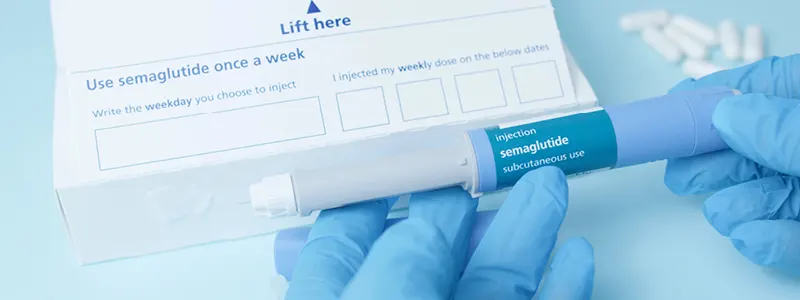Up to Date Coverage of the Ozempic Gallbladder Class Action Lawsuit
Ozempic gallbladder class action lawsuit involves claims against the manufacturer, Novo Nordisk, for failing to adequately warn users about the risk of gallbladder issues, such as gallstones and acute gallbladder disease, associated with the drug.
Ozempic, known generically as Semaglutide, is used to manage blood sugar levels in type 2 diabetes, but in recent years Ozempic has become famous as a weight loss drug.
Some users of Ozempic have reported severe gallbladder complications, which have led to numerous lawsuits by individuals who claim that the makers of Ozempic did not adequately warn them of the potential side effects of the drug.
Those individuals are seeking compensation for medical expenses, lost wages, and pain and suffering they claim are the result of taking Ozempic without proper warning.
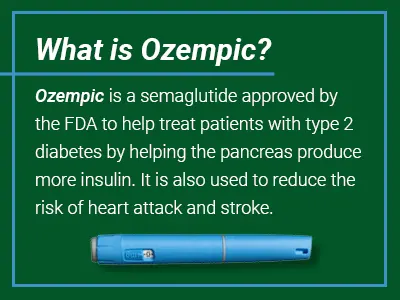
- In February 2024, a small number of Ozempic related cases (less than 100) were consolidated into an MDL.
- In August 2024, there were just over 350 plaintiffs in the Ozempic MDL.
- By September, that number had more than doubled, and by September of 2024, there were over 1,200 plaintiffs in the MDL.
These lawsuits allege that the company failed to provide adequate warnings about the risks of gallbladder issues, such as gallstones, associated with Ozempic use.
As of November 2024, the MDL is progressing with ongoing discovery and motion hearings, and new cases continue to be added.
To qualify for the Ozempic gallbladder lawsuit, plaintiffs must have:
#1: Taken Ozempic prior to April of 2022
#2: Have had damages as the result of taking Ozempic
Damages may include loss of work hours, loss of job, medical bills, and pain and suffering.
Legal Proceedings and Multidistrict Litigation (MDL) in Ozempic Lawsuits

These lawsuits, filed by users of Ozempic who allege they experienced severe gallbladder complications like gallstones and acute gallbladder disease, have been consolidated into an MDL, or Multidistrict Litigation.
What most people think of as class action lawsuits, are almost always MDL’s. When a large number of individuals file similar cases with similar complaints, they are often “consolidated” to help expedite the legal process.
This is what MDL’s are for.
What Is an MDL?
Multidistrict litigation (MDL) is a special legal procedure designed to handle complex cases that involve numerous plaintiffs across different jurisdictions with similar claims.
Instead of having each case move independently through separate courts, the MDL process consolidates these cases under one federal court. A single judge oversees the pre-trial activities, such as discovery and preliminary hearings.
Once these steps are complete, cases can either be resolved through settlement or returned to their original courts for trial.
The Ozempic lawsuits qualify for MDL because they share common issues, including allegations that the manufacturer failed to warn users about the drug’s potential risks.
By grouping the cases, the judicial system aims to avoid duplicating efforts, save time, and minimize inconsistent rulings.
Why Consolidate into an MDL?
The rising number of lawsuits against Novo Nordisk highlights the need for a streamlined legal approach.
When dozens—or even hundreds—of claims share similar factual and legal questions, the MDL process offers a centralized way to handle them more efficiently.
For the Ozempic litigation, key issues revolve around whether Novo Nordisk knew or should have known about the risks of gallbladder complications and if they sufficiently disclosed these risks to consumers and healthcare providers.
Individual cases would otherwise require separate legal teams to investigate the same facts, interview the same witnesses, and engage with the same experts regarding the drug’s safety, manufacturing process, and labeling.
Consolidating these efforts reduces redundancy and speeds up the pace of the litigation as a whole.
Growth in the Number of Ozempic Lawsuits
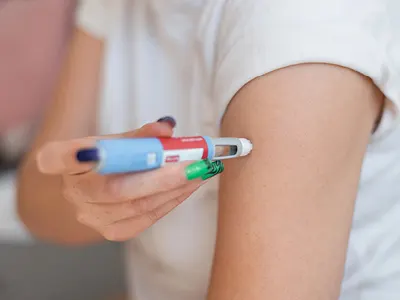
Since the initial lawsuits were filed, the number of cases related to Ozempic has grown significantly from less than 100 to over 1,200 as of November 2024.
This rapid increase reflects the number of individuals reporting similar serious gallbladder complications.
Many of these plaintiffs allege that they suffered medical hardship, financial burden, or emotional distress due to the drug – and – that they were not properly warned.
With more patients becoming aware of these potential risks, it’s likely that the MDL will continue to expand.
What is The Status of The Ozempic Gallbladder Class Action Suit
As of November 2024, there are over 1,200 plaintiffs involved in the Ozempic lawsuit, and most recently, the judge presiding over the MDL has ordered the commencement of discovery.

This means the legal process is moving forward but is a long way from its conclusion.
The next major milestone plaintiffs or potential plaintiffs should watch for is the ordering and scheduling of bellwether trials.
Once bellwether trials have been ordered, this this typically begins the start of a process towards a potential settlement agreement.
Until bellwether trials have been ordered and reach their conclusion, plaintiffs in the case remain a long way away from receiving any sort of compensation.
Potential Compensation in Ozempic Lawsuits
It is nearly impossible to tell at this point what type of compensation plaintiffs may be awarded or if they will receive compensation at all.
Plaintiffs in the Ozempic lawsuits are seeking compensation for the hardships they endured after experiencing severe gallbladder complications allegedly linked to the drug.
Among the most common damages being pursued are reimbursement for medical expenses, compensation for lost wages, and payments for pain and suffering.
Gallbladder complications, such as gallstones or acute gallbladder disease, can lead to prolonged discomfort, invasive medical procedures, and even surgical intervention, such as gallbladder removal.

For individuals who required surgery, the medical bills often include hospitalization, emergency care, and follow-up treatments—all of which can quickly add up.
Patients recovering from such procedures may face time away from work, resulting in lost income, which some plaintiffs may seek as damages as well.
Cases involving more severe complications, like surgery or permanent health problems, may result in higher settlement amounts due to the lasting impact on a victim’s quality of life.
But remember, this case is in its infancy, and there is no way to know if this case will settle at all, so there is little reason to speculate about settlement amounts or awards.
Understanding the Link Between Ozempic Use and Gallbladder Issues
Ozempic, a widely prescribed medication for managing type 2 diabetes and more recently, as a very effective weight loss drug, has been associated with an increased risk of gallbladder complications.
While the drug, known generically as Semaglutide, has proven effective for blood sugar regulation and weight management, reports from users and medical studies have highlighted serious concerns about its potential side effects on the gallbladder.
These include the development of gallstones and acute gallbladder disease, with risks appearing to intensify for individuals using the drug at higher doses or for extended periods.
The Gallbladder’s Role and Potential Impact
The gallbladder is a small organ responsible for storing bile, a digestive fluid that helps break down fat from the foods we eat.
Problems arise when bile substances, such as cholesterol, form hardened deposits known as gallstones.
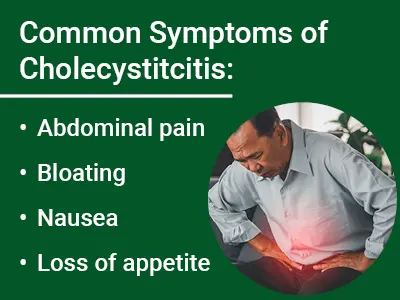
Gallstones can block the bile ducts, leading to pain, inflammation, and, in severe cases, a condition called acute cholecystitis, which often requires surgical intervention.
Patients who use Ozempic have reported an alarming incidence of gallstones and gallbladder inflammation.
Medical studies back these reports, revealing that the drug’s mechanism, which involves altering digestive processes, may contribute to these complications.
Ozempic slows down gastric emptying—a feature that helps individuals feel fuller for longer and contributes to weight loss—but this slowdown is believed to increase cholesterol saturation in the bile, raising the likelihood of gallstone formation.
Rapid Weight Loss Know to Increase Gallbladder Issues
Many people have found Ozempic to be an excellent drug for rapid weight loss. Unfortunately, it is commonly known in medical circles that rapid weight loss can lead to gallbladder issues.
According to the National Institute of Diabetes and Kidney Diseases website:
Perhaps the rapid weight loss achieved by Ozempic has further contributed to gallbladder issues, which plaintiffs claim they were not properly warned about.
What Research Says About Ozempic Use and the Gallbladder Impact
Multiple studies shed light on how Ozempic impacts gallbladder health.
A meta-analysis of clinical trials found that patients taking Semaglutide had a higher risk of developing gallstones (clinically known as cholelithiasis) compared to those on placebo or other medications.
One key study cited that 1.5% of users taking 0.5 mg doses of Ozempic developed gallstones, while another study showed a risk of up to 1.27 times higher for gallbladder conditions when using glucagon-like peptide-1 receptor agonists (GLP-1 RAs), the class of drugs to which Ozempic belongs.
Prolonged use and higher doses amplify the risks.
The likelihood of gallbladder disease appears to grow with extended treatment durations, making long-term monitoring crucial for users.
According to findings published in peer-reviewed medical journals such as JAMA Internal Medicine, not only can the medication increase gallstone formation, but the majority of affected patients ultimately require gallbladder removal surgery.
Implications for Patients
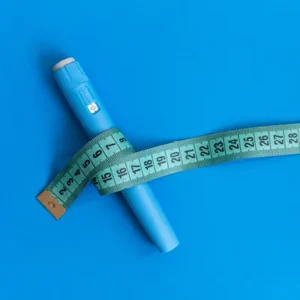
The increasing prevalence of gallbladder-related complications has raised questions about how patients using Ozempic can protect themselves while maintaining the benefits of the medication.
For individuals managing diabetes or seeking weight loss through this drug, the risks underline the importance of regular communication with healthcare providers.
Doctors may assess factors like dosage, treatment duration, and individual patient risk for gallbladder issues before prescribing Ozempic.
For those already on the medication, being vigilant about symptoms of gallbladder problems is essential.
Warning signs such as sudden pain in the upper right abdomen, nausea, vomiting, or fever should prompt immediate medical attention.
Early detection can mitigate complications and guide decisions about continuing or adjusting the treatment plan.
Failure to Warn Allegations in Ozempic Lawsuits
The lawsuits surrounding Novo Nordisk, the manufacturer of Ozempic, have brought significant attention to the concept of “failure to warn.”
At the core of these legal claims, plaintiffs argue that the company did not adequately inform consumers about the risks of gallbladder complications, including gallstones and acute gallbladder disease, associated with their medication.
This lack of transparency is central to the product liability cases, raising questions about corporate responsibility, consumer safety, and the ethical obligations of pharmaceutical manufacturers.
Understanding the Issue
Ozempic, known generically as Semaglutide, is primarily prescribed to help manage type 2 diabetes and, in some cases, for weight management.
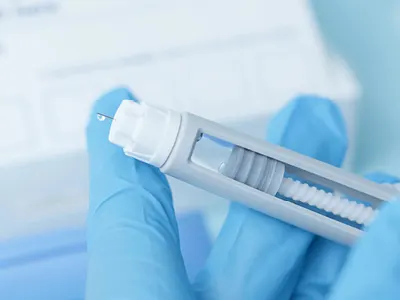
While the drug has proven effective for these purposes, concerns have emerged regarding its side effects. Users of Ozempic have reported several gallbladder-related issues, ranging from gallstones to severe gallbladder disease requiring surgery.
These conditions, in some cases, have caused considerable discomfort, medical interventions, and financial stress for patients.
Central to the lawsuits is the claim that Novo Nordisk did not provide adequate warnings about these potential side effects.
Plaintiffs argue that had they been informed of the risks, they might have made different decisions regarding their treatment options.
This failure to warn undermines the informed consent process that is critical in medical treatment, where patients rely on accurate, comprehensive information to weigh the benefits and risks of a medication.
The Importance of Product Warnings
Pharmaceutical companies bear a responsibility to disclose all known risks associated with their drugs.
This obligation ensures that doctors and patients can make informed choices. When companies fail to fulfill this duty, they can be held liable under product liability laws, which cover three main areas:
- Defective Manufacturing – Issues arising from errors during production.
- Design Defects – Flaws in the drug’s formulation itself.
- Failure to Warn – A company’s neglect to adequately inform about a product’s risks.

The lawsuits against Novo Nordisk focus on the third category.
Critics say that the risks of gallbladder complications were either downplayed or not sufficiently communicated in Ozempic’s warning labels and marketing.
While the drug’s documentation includes some mention of digestive side effects, plaintiffs claim they were not made aware of how severe or common gallbladder conditions could be.
Implications for Novo Nordisk
The allegations of failing to warn could lead to significant legal and financial consequences for Novo Nordisk.
If the courts find the company liable, they may face substantial settlement payouts to affected patients.
Beyond monetary damages, such cases can harm a company’s reputation, particularly when public trust in pharmaceutical manufacturers is so vital.
For Novo Nordisk, the lawsuits highlight the need for stricter compliance with regulatory standards and transparent communication with both healthcare providers and patients.
The company could also face increased scrutiny from the U.S. Food and Drug Administration (FDA) and other regulatory bodies.

What It Means for Consumers
For patients, these lawsuits emphasize the importance of understanding the medications they are prescribed.
While they may not have control over how drug manufacturers choose to communicate risks, patients can proactively discuss potential side effects with their doctors.
It’s also a reminder to read the fine print on medication guidelines and ask questions about anything unclear.
Who is Eligible for the Ozempic Gallbladder Lawsuit
According to Lawsuit Legal News, to be eligible for this MDL, a person must have experienced gallbladder issues after taking Ozempic prior to April 2022, sought treatment, and sustained damages because of their injury.
Most injuries are going to be either medical expenses related to taking Ozempic, missed work or job loss, and/or pain and suffering.
How to Join the Ozempic Gallbladder Lawsuit
If you took Ozempic prior to April 2022 and have sustained injuries as a result, you may be eligible to join this MDL.
We cannot provide any legal advice. If you perform an internet search for “Ozempic Gallbladder Lawsuit” your search results will undoubtedly include law firms who are already representing clients in this MDL. This is probably a good place to start.
About the Authors
Balanced Bridge Funding offers legal funding solutions for plaintiffs, plaintiff attorneys, attorneys, and law firms.
At times, a settlement can be reached in a case, but various delays can hold up the distribution of contingency fees for plaintiff attorneys and/or the settlement awards for plaintiffs.
In those situations, Balanced Bridge provides advances to attorneys and advances to plaintiffs on the pending fees or awards.
To talk to one of our legal funding specialists about getting help managing your law firm cash flow, please call (267) 457-4540 or email info@balancedbridge.com. To apply online, simply click here and fill out our quick application form.
Summary Ozempic Gallbladder Lawsuit
The gallbladder lawsuits involving Ozempic, a diabetes medication manufactured by Novo Nordisk, center around serious allegations and significant legal implications.
At their core, these cases focus on claims that the company failed to adequately warn consumers about the risks of gallbladder complications associated with the drug.
Plaintiffs assert that side effects such as gallstones and acute gallbladder disease, sometimes resulting in necessary gallbladder removal surgery, were not sufficiently disclosed.
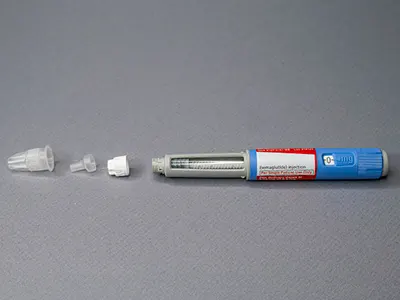
This alleged lack of transparency has become a critical point in the product liability claims, raising concerns over the company’s communication practices.
Given the growing number of lawsuits, the legal system has consolidated the cases into a multidistrict litigation (MDL).
This process centralizes the claims under one federal court, enabling streamlined pre-trial proceedings.
The MDL structure is particularly beneficial in complex cases like these, where plaintiffs across various jurisdictions share similar allegations. The volume of cases within this MDL has continued to rise, reflecting widespread reports from users who experienced significant gallbladder-related issues.
Plaintiffs in these lawsuits seek various forms of compensation for the hardships endured. These include covering medical expenses associated with gallbladder treatment, reimbursement for income lost due to recovery time, and damages for pain and emotional suffering.
For those who required invasive care or surgery, these expenses can be substantial.
For Novo Nordisk, these allegations have serious implications. Beyond the financial impact of potential settlements, the lawsuits highlight the importance of transparency in pharmaceutical warnings and raise questions about corporate accountability.
For consumers, the centralization of these cases into an MDL offers hope for quicker resolutions while ensuring that their grievances are heard in a fair, organized process.
Ultimately, the Ozempic lawsuits underscore broader concerns related to patient safety, communication from pharmaceutical companies, and the legal mechanisms aimed at addressing large-scale product liability claims.
These cases may set critical precedents for future litigation involving similar allegations.

